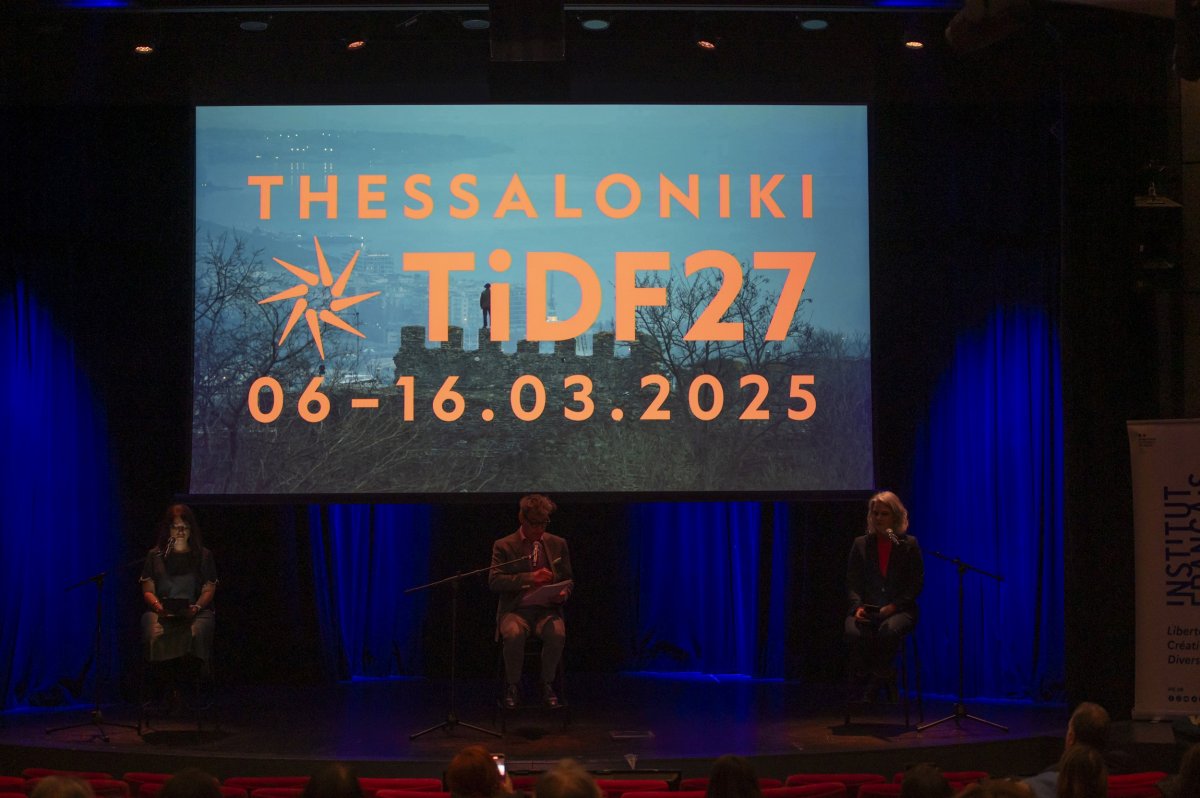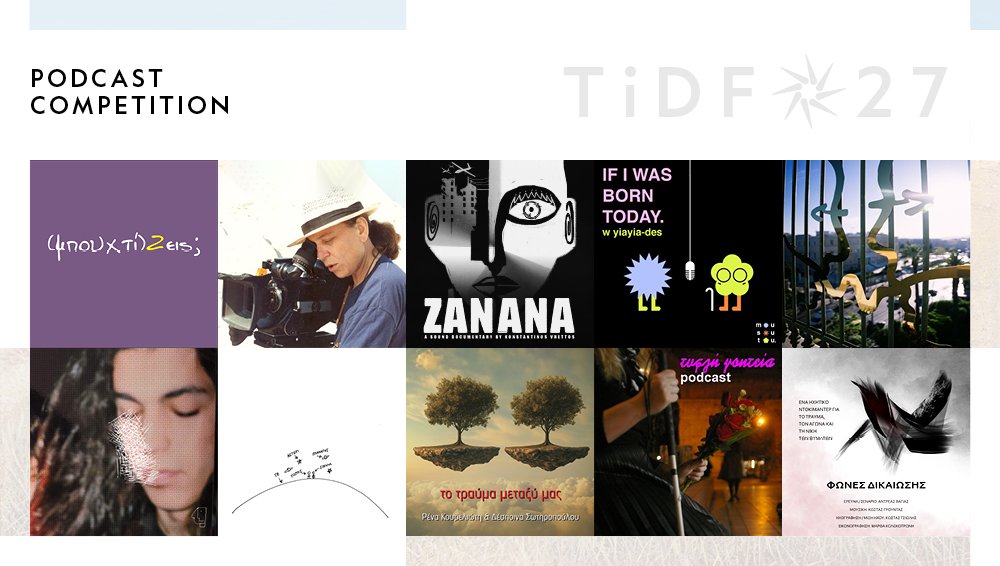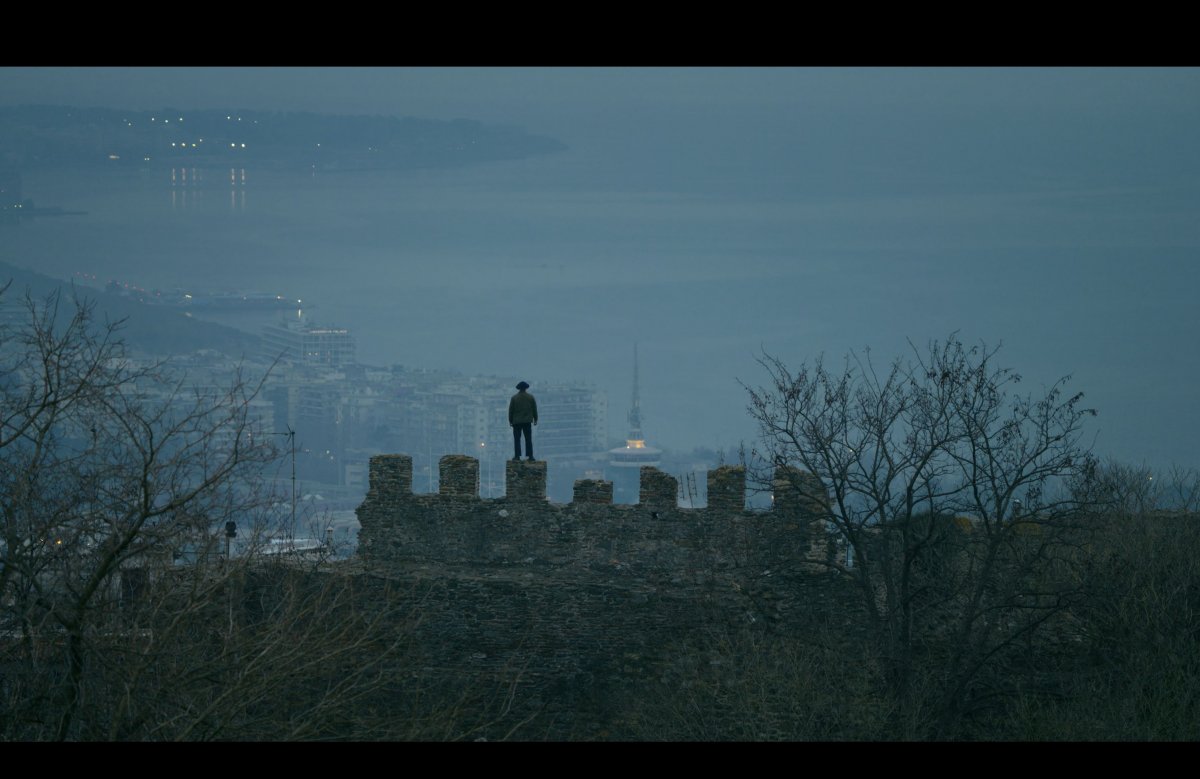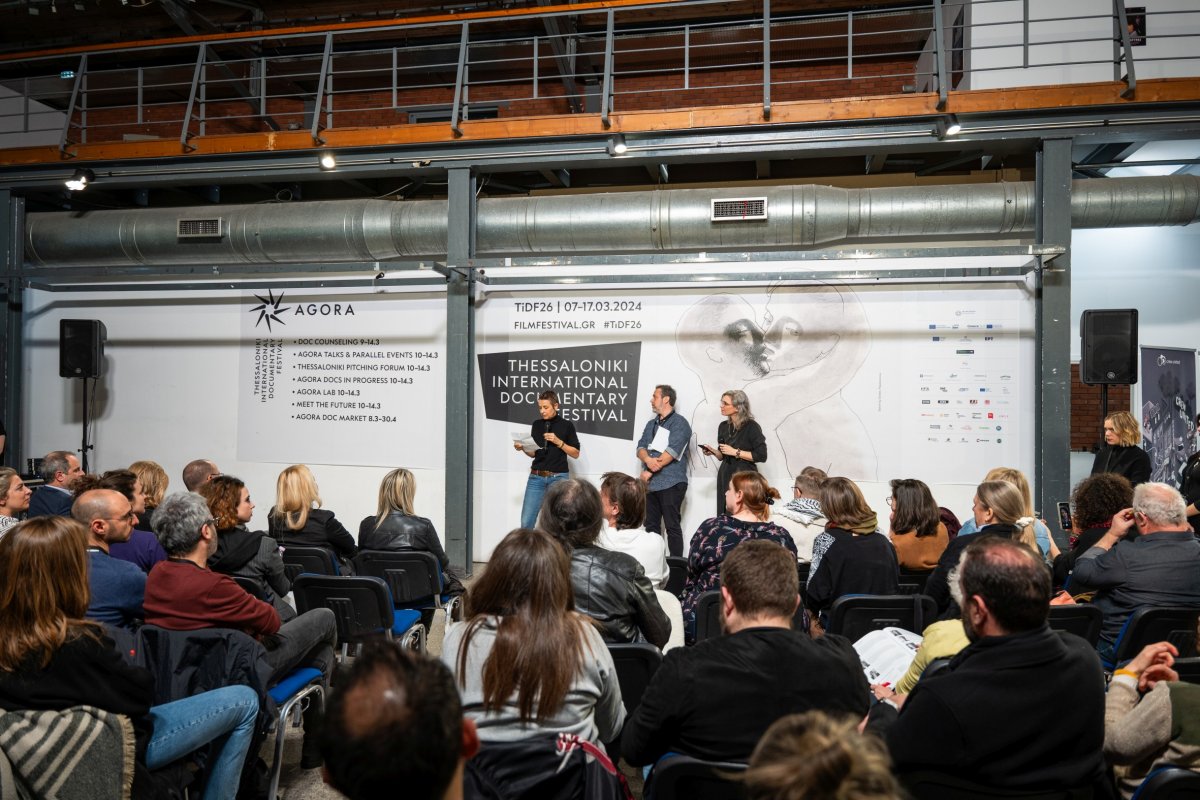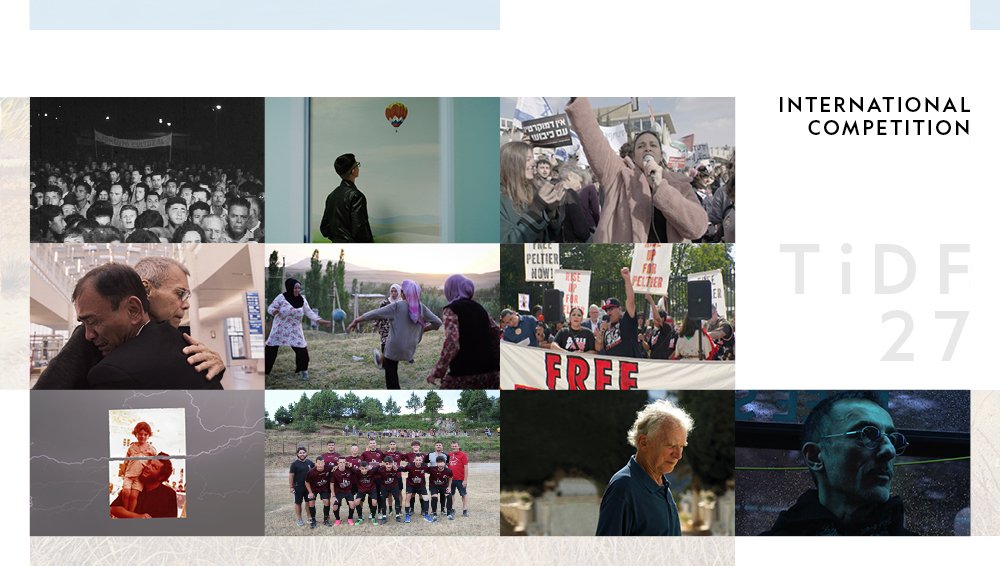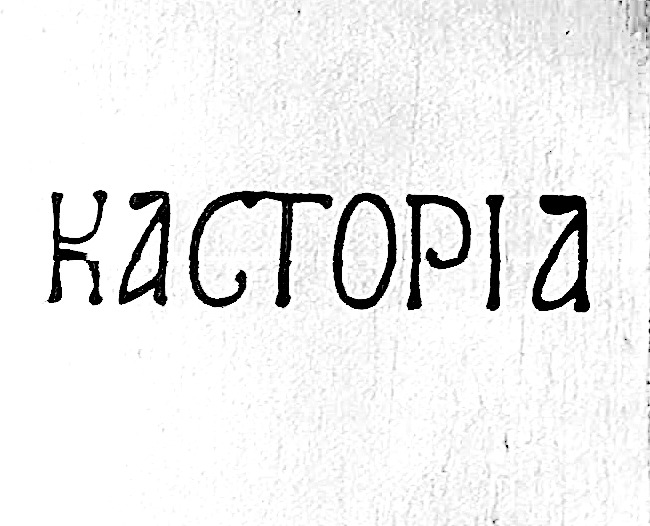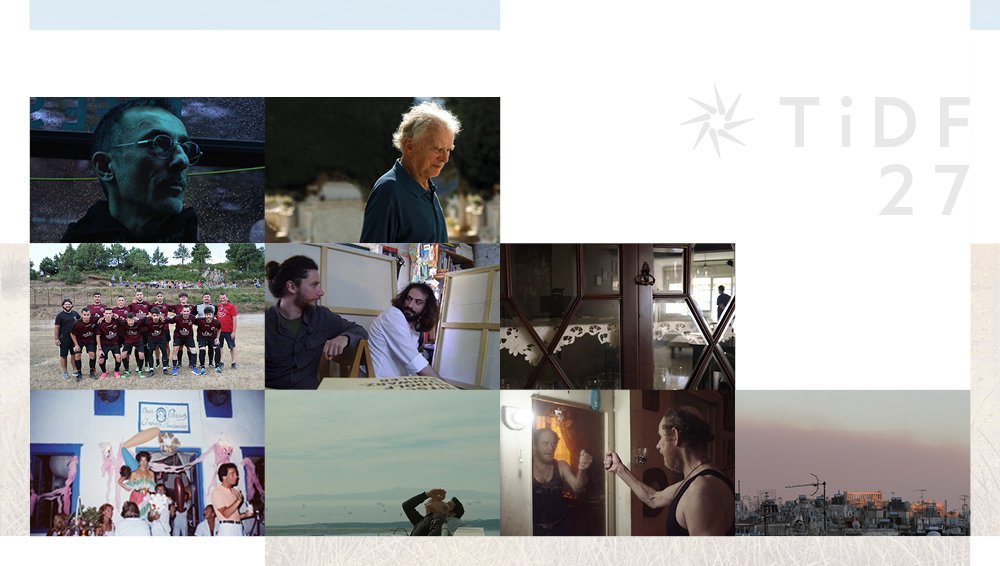VILMOS ZSIGMOND MASTERCLASS
The multi-award winning director of photography Vilmos Zsigmond spoke about the unique art of the filmmaker, his experiences and collaborations with celebrated directors and the difference of American cinema in the ‘60s and ‘70s from that of today, at the Masterclass he gave on Wednesday, March 18, at the John Cassavetes theater as part of the sidebar events of the 11th Thessaloniki Documentary Festival.
The filmmaker of Hungarian descent has won an Oscar for the film Close Encounters of the Third Kind (he was nominated three more times for the films The Deer Hunter, The River and the Black Dahlia). He has worked with directors such as Michael Cimino, Brian de Palma, Robert Altman, Woody Allen and Steven Spielberg. He is here in Thessaloniki on the occasion of the screening of the documentary No Subtitles Necessary: Laszlo and Vilmos by James Chressanthis. The film follows the parallel journeys of Zsigmond and his compatriot and colleague Laszlo Kovac
James Chressanthis also participated in the Master Class. Vilmos Zsigmond described him as “one of the best new filmmakers. I’ve known him since 1987, when we worked together on the Witches of Eastwick. Maybe he hasn’t been nominated for an Oscar yet, but he has done good work”.
The 79-year-old cinematographer, who has signed off on the photography of 82 films, spoke about his beginnings and about the favorable conditions of that era. “The first years in the USA were difficult. I had to take pictures of babies in birthdays and baptisms in order to live; and without knowing the language. It took 10 years until I got the chance to work on my first big film”, he noted and added: “Laszlo and I were in the USA at the right time, at the time that the American New Wave was beginning, that is independent films by the new directors of the era, very much in a similar spirit as with Italian Neorealism and the French nouvelle vague”.
Comparing the past with the present, he stressed: “At that time, the director was king of the set. Until the end of the ‘70s, it was the golden age of the new wave. Great actors such as Julie Christie, Al Pacino or Gene Hackman were happy about the films they made, in spite of barely getting paid enough to cover their rent. Today, if an actor gets under 10 million dollars he is unhappy! One needs at least 20 million dollars just for the promotion of the film as well”.
As opposed to this gigantism, he called the success of Slumdog Millionaire a “miracle”: “There is no similar film to compare it to. It showed that it is not necessary to spend insane amounts in order to make an extraordinary film. The only thing you need is talent. It’s a miracle that this happened under the present conditions in the industry”.
Answering a question from the audience, Vilmos Zsigmond made a special mention of Michael Cimino’s film Heaven’s Gate, whose financial failure was one of the reasons that American studios stopped giving directors complete control over film productions. “The version that lasted for 3 hours and 20 minutes was a real catastrophe in terms of receipts, that’s why the studio cut it down to 95 minutes. I believe it was a ridiculous way for them to sell the film to the audience and of course it didn’t work”, Mr. Zsigmond said and added: “I believe that Heaven’s Gate was far ahead of its time. Today it is contemporary, because of the economic crisis. But then, capitalism was in bloom and the audience didn’t want to see a film about the awful poverty in the country at the beginning of the century”.
Speaking about James Chressanthis’ comment on the battle between Michael Cimino with the American media at the time, the Hungarian director of photography said: “The Deer Hunter, Cimino’s first important film, was about the war in Vietnam and its effects on people, it was seen as a right-wing film by the American press, which at the time had strong left-wing tendencies. They said Cimino did not deserve to get an Oscar, something that made him furious. So he decided to ban all press from the shooting of Heaven’s Gate. This was a big mistake, because you can’t fight the press. It’s all powerful and it can kill you, as it killed Heaven’s Gate».
Regarding the daily routine of shooting, Vilmos Zsigmond said: “The first thing I do is drink a lot of coffee! I usually ask the director the night before how he wants to shoot his scenes so that I am prepared. However, I’ve also worked with directors who improvised, such as Robert Altman, with whom I worked on three films. When we were shooting McCabe & Mrs Miller, we didn’t even have a written script for the next day. But in spite of the lack of preparation he gave me as much time as I needed in order to study the lighting conditions”.
The DP expanded on the magic of lighting: “I love lighting. It’s important to create, through it, the mood of a scene, a film. You have to choose the right time, such as for example early in the morning when the light is amazing and you don’t need artificial lighting. Sun rays, shadows, these are elements I chase. I save time by making sure that scenes are shot at the right time of day with natural light”, he said, mentioning the “amazing study of light” made by his colleague and Ingmar Bergman collaborator Sven Nykvist.
As he said, he was inspired by classic black and white films and by classic paintings. “In Hungary we didn’t see many western films. I was very inspired by Citizen Kane, which was a wonderful film, which I studied over and over. I was also very impressed by Laurence Olivier’s Hamlet. Generally I loved black and white films. The color films I’ve made are shot as though they were black and white. You can see this if you remove the color from your television set. Light is, in my opinion, the most important thing. Frame composition, for me, is secondary and more instinctive”, Zsigmond declared and added: “I also learned a lot from painters such as Rembrandt, Caravaggio or Latour, whose paintings were lit as though they were scenes from a film”. In his opinion, the director of photography “is an artist, something like a painter. But instead of brushes and paints, he uses cameras, lenses, helicopters and steadicams”.
At the same time, he explained that he consciously avoids having a specific, personal style of filming: “It is best when the director of photography doesn’t have a personal style, since each film has its own look”.
An excerpt from The Rose followed, one of Zsigmond’s most characteristic works. Afterwards the artist revealed which kinds of films he enjoys working on and which he doesn’t. “I hate violent films. The Deer Hunter was a film that had as much violence as I can stand to shoot. I didn’t like the violent scenes, but they were justified because of the conditions of war. But I don’t understand why there are so many films with meaningless violence. I don’t even understand why people go to see them. I also don’t like special effects, but in Close Encounters of the Third Kind they were absolutely necessary because of the story”, he noted and concluded: “Most of the films I have made, I said ‘yes’ because I liked the story or the director. I have a room full of scripts that were never made and I would love to do. I like small, human stories, stories of love”.




